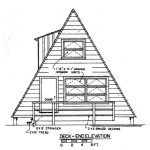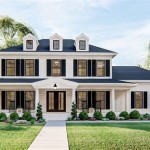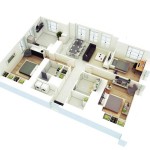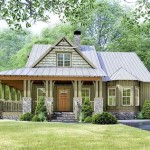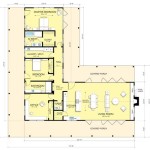Wooden Bird House Plans are detailed instructions and diagrams that guide the construction of birdhouses made from wood. These plans provide step-by-step guidance, including materials lists, cut diagrams, and assembly instructions. Birdhouses built with wooden bird house plans offer nesting places for birds, helping to support bird populations and create a welcoming backyard habitat.
A comprehensive wooden bird house plan will include specifications for the type and size of wood to use, the dimensions and shape of the birdhouse, the location and size of the entrance hole, and the best placement for the birdhouse in the yard. These detailed plans ensure that the final product is suitable for the type of bird species it is intended for, offering a safe and secure nesting environment.
In the following sections, we will delve into the key considerations when choosing and using wooden bird house plans. We will provide guidance on selecting the appropriate plan, preparing the materials, and the step-by-step instructions involved in building a wooden birdhouse. Additionally, we will discuss various bird species and their specific habitat preferences to help you choose the right birdhouse design.
Wooden Bird House Plans should consider several key factors to ensure they provide a suitable and safe nesting environment for birds. Here are nine important points to keep in mind:
- Species-specific design
- Appropriate entrance hole size
- Proper ventilation
- Drainage and cleanout
- Predator protection
- Durable materials
- Easy to clean and maintain
- Aesthetically pleasing
- Detailed instructions
By considering these points when choosing and using wooden bird house plans, you can create a welcoming and functional birdhouse that will attract feathered friends to your backyard.
Species-specific design
When choosing a wooden bird house plan, it is crucial to consider the specific bird species you want to attract. Different bird species have varying nesting preferences, including the size and shape of the birdhouse, the size of the entrance hole, and the height at which the birdhouse is placed.
- Size and shape: The size and shape of the birdhouse should accommodate the bird’s body size and nesting habits. For example, smaller birds like chickadees and wrens prefer smaller birdhouses with a simple rectangular or square shape. Larger birds like bluebirds and woodpeckers require more spacious birdhouses with specific dimensions and designs.
- Entrance hole size: The entrance hole size is crucial as it determines which birds can access the birdhouse. The hole should be large enough for the target bird species to enter comfortably but small enough to prevent larger birds or predators from entering. Different bird species have specific preferences for entrance hole sizes, so it’s important to choose a plan that s the species you want to attract.
- Height: The height at which the birdhouse is placed can also influence which birds will use it. Some birds, like bluebirds, prefer birdhouses placed higher up, while others, like wrens, may prefer birdhouses closer to the ground. Consider the nesting preferences of the target bird species when choosing the placement height of the birdhouse.
- Other features: In addition to the basic design considerations, some wooden bird house plans may include additional features to enhance the birdhouse’s functionality and appeal. These features may include ventilation holes to prevent moisture buildup, drainage holes to prevent water from accumulating inside the birdhouse, and perches or nesting materials to make the birdhouse more comfortable for the birds.
By considering the species-specific design requirements, you can choose a wooden bird house plan that will provide a suitable and welcoming nesting environment for the birds you want to attract.
Appropriate entrance hole size
The size of the entrance hole is a critical factor in wooden bird house plans, as it determines which bird species can access the birdhouse. The entrance hole should be large enough for the target bird species to enter comfortably but small enough to prevent larger birds or predators from entering.
- Too small: If the entrance hole is too small, birds may not be able to enter the birdhouse, or they may have difficulty getting in and out. This can be especially problematic for larger birds or birds with long tails.
- Too large: If the entrance hole is too large, larger birds or predators may be able to enter the birdhouse and harm the nesting birds or their eggs. It can also make the birdhouse more vulnerable to drafts and cold weather.
- Species-specific: Different bird species have specific preferences for entrance hole sizes. For example, chickadees prefer an entrance hole size of about 1-1/8 inches, while bluebirds prefer an entrance hole size of about 1-1/2 inches. It is important to choose a wooden bird house plan that specifies the appropriate entrance hole size for the target bird species you want to attract.
- Placement: The placement of the entrance hole can also affect its size. Entrance holes that are placed near the bottom of the birdhouse may need to be larger to allow for easier access, while entrance holes that are placed higher up may be smaller to deter predators.
By choosing a wooden bird house plan with an appropriate entrance hole size, you can ensure that the birdhouse is accessible to the target bird species while preventing larger birds or predators from entering.
Proper ventilation
Proper ventilation is crucial in wooden bird house plans to prevent moisture buildup and ensure the health and well-being of nesting birds. Moisture can accumulate inside the birdhouse due to condensation, bird droppings, and other factors. Without adequate ventilation, this moisture can lead to mold growth, bacteria, and other health hazards for the birds.
Ventilation holes allow for the circulation of fresh air and the escape of moisture from the birdhouse. These holes should be placed near the top of the birdhouse, opposite the entrance hole, to create a natural airflow. The size and number of ventilation holes will vary depending on the size of the birdhouse and the climate in which it is located.
In general, it is recommended to have at least two ventilation holes, each with a diameter of about 1/2 inch. These holes should be covered with a fine mesh or screen to prevent birds from escaping or predators from entering. It is important to ensure that the ventilation holes are not blocked by nesting materials or other debris.
Proper ventilation in wooden bird house plans helps to maintain a healthy and comfortable environment for nesting birds. It prevents moisture buildup, reduces the risk of mold and bacteria growth, and ensures a steady supply of fresh air. By incorporating adequate ventilation into your birdhouse plans, you can help provide a safe and healthy nesting place for your feathered friends.
Drainage and cleanout
Drainage and cleanout are important considerations in wooden bird house plans to ensure the health and well-being of nesting birds. Proper drainage prevents water from accumulating inside the birdhouse, which can lead to mold growth, bacteria, and other health hazards. Cleanout holes allow for easy access to the birdhouse for cleaning and maintenance.
Drainage holes
Drainage holes allow excess water to escape from the birdhouse. These holes should be placed near the bottom of the birdhouse, and they should be large enough to allow water to drain freely. The size and number of drainage holes will vary depending on the size of the birdhouse and the climate in which it is located.
In general, it is recommended to have at least two drainage holes, each with a diameter of about 1/2 inch. These holes should be covered with a fine mesh or screen to prevent birds from escaping or predators from entering. It is important to ensure that the drainage holes are not blocked by nesting materials or other debris.
Cleanout holes
Cleanout holes allow for easy access to the birdhouse for cleaning and maintenance. These holes should be large enough to allow a person to reach inside the birdhouse to remove old nesting materials, droppings, and other debris. Cleanout holes should be placed in a convenient location, and they should be covered with a removable panel or door.
It is important to clean out birdhouses regularly, especially after the nesting season is over. This will help to prevent the buildup of mold, bacteria, and other harmful substances. By incorporating proper drainage and cleanout holes into your wooden bird house plans, you can help to ensure the health and well-being of nesting birds.
Predator protection
Predator protection is a crucial consideration in wooden bird house plans to ensure the safety of nesting birds and their eggs. Predators such as cats, snakes, and squirrels can pose a significant threat to birds, and it is important to take steps to minimize the risk of predation.
- Placement: The placement of the birdhouse can play a significant role in predator protection. Avoid placing birdhouses in areas that are easily accessible to predators, such as near trees or shrubs that provide climbing access. Choose a location that is open and visible, making it harder for predators to approach undetected.
- Height: The height of the birdhouse can also deter predators. Placing the birdhouse at a sufficient height off the ground makes it more difficult for ground-based predators such as cats and snakes to reach. Aim for a height of at least 5 feet above the ground.
- Entrance hole size: The size of the entrance hole can limit access to predators. Choose a plan with an entrance hole size that is appropriate for the target bird species but small enough to prevent larger predators from entering. Avoid entrance holes that are larger than 1-1/2 inches in diameter.
- Predator guards: Some wooden bird house plans incorporate predator guards, such as baffles or perches, to further deter predators. Baffles are metal or plastic plates that are placed below the entrance hole, making it difficult for predators to reach inside. Perches should be placed near the entrance hole, allowing birds to land safely before entering, while preventing predators from using the perch to access the nest.
By incorporating predator protection measures into your wooden bird house plans, you can help to create a safer nesting environment for birds and increase their chances of successfully raising their young.
Durable materials
When choosing materials for your wooden bird house plans, durability is of utmost importance. The birdhouse will be exposed to the elements, including rain, snow, sun, and wind. It is important to choose materials that can withstand these elements and provide a long-lasting home for the birds.
- Cedar: Cedar is a naturally rot-resistant wood that is ideal for birdhouses. It is also resistant to insects and decay, making it a durable choice that will last for many years.
- Redwood: Redwood is another rot-resistant wood that is suitable for birdhouses. It is strong and durable, and it has a natural resistance to termites and other pests.
- Cypress: Cypress is a water-resistant wood that is also resistant to rot and decay. It is a good choice for birdhouses that will be exposed to moisture.
- Pine: Pine is a more affordable option for wooden bird house plans. It is not as rot-resistant as cedar or redwood, but it can be treated with a water-resistant sealant to improve its durability.
In addition to the type of wood, the thickness of the wood is also important. Thicker wood will be more durable and will provide better insulation for the birds. It is recommended to use wood that is at least 1/2 inch thick for the walls of the birdhouse and 3/4 inch thick for the roof.
Easy to clean and maintain
When choosing wooden bird house plans, it is important to consider how easy the birdhouse will be to clean and maintain. Regular cleaning is essential to prevent the buildup of mold, bacteria, and other harmful substances that can pose a health risk to nesting birds. A well-maintained birdhouse will also last longer and provide a more comfortable home for the birds.
- Removable roof or door: A removable roof or door makes it easy to access the inside of the birdhouse for cleaning. This is especially important for deep birdhouses or birdhouses with complex designs.
- Smooth interior surfaces: Smooth interior surfaces are easier to clean and disinfect. Avoid using rough or unfinished wood inside the birdhouse, as this can provide a breeding ground for bacteria and parasites.
- Drainage holes: Drainage holes allow water to escape from the birdhouse, preventing the buildup of moisture and mold. Make sure the drainage holes are large enough to allow water to drain freely, but not so large that birds can escape or predators can enter.
- Non-toxic materials: All materials used in the birdhouse should be non-toxic to birds. This includes the wood, paint, and any other materials used in the construction or decoration of the birdhouse.
By considering these factors when choosing wooden bird house plans, you can ensure that the birdhouse you build is easy to clean and maintain, providing a healthy and comfortable home for nesting birds.
Aesthetically pleasing
When choosing wooden bird house plans, it is important to consider the aesthetic appeal of the birdhouse. A well-designed birdhouse can enhance the beauty of your backyard or garden, and it can also provide a unique and charming home for the birds. Here are a few things to keep in mind when considering the aesthetics of your birdhouse:
Style
The style of the birdhouse should complement the overall design of your backyard or garden. If you have a traditional-style home, you may want to choose a birdhouse with a classic design. If you have a more modern home, you may want to choose a birdhouse with a more contemporary design. There are many different styles of birdhouses available, so you can find one that fits your taste and the style of your home.
Color
The color of the birdhouse is also important to consider. You may want to choose a color that matches the color of your home or garden, or you may want to choose a color that contrasts with the surroundings. There are many different colors of birdhouses available, so you can find one that matches your taste and the style of your home.
Shape
The shape of the birdhouse is another important consideration. There are many different shapes of birdhouses available, from traditional rectangular birdhouses to more whimsical shapes like birdhouses shaped like animals or flowers. Choose a shape that you find appealing and that fits the style of your home and garden.
Decorations
You can also add decorations to your birdhouse to make it more unique and personal. You can paint the birdhouse, add trim or molding, or attach other decorations like bird figurines or flowers. Be creative and have fun with it!
By considering these factors, you can choose a wooden bird house plan that will create a beautiful and functional home for the birds in your backyard.
Detailed instructions
Step 1: Gather materials and tools
Before you begin building your birdhouse, you will need to gather all of the necessary materials and tools. The materials list will vary depending on the specific birdhouse plan you choose, but in general, you will need the following:
- Wood (cedar, redwood, cypress, or pine)
- Nails or screws
- Wood glue
- Drill
- Saw
- Hammer or nail gun
- Sandpaper
- Paint or stain (optional)
Step 2: Cut the wood
Once you have gathered all of the necessary materials, you can begin cutting the wood. The cut list will vary depending on the specific birdhouse plan you choose, but in general, you will need to cut the following pieces:
- Front and back panels
- Side panels
- Roof
- Base (optional)
- Entrance hole
Step 3: Assemble the birdhouse
Once you have cut all of the wood, you can begin assembling the birdhouse. Start by attaching the front and back panels to the side panels. Then, attach the roof to the top of the birdhouse. Finally, attach the base (if desired) to the bottom of the birdhouse. Make sure to use wood glue and nails or screws to secure all of the pieces together.
Step 4: Finish the birdhouse
Once the birdhouse is assembled, you can finish it by sanding the exterior and painting or staining it. You can also add any other decorations you desire, such as bird figurines or flowers. Once the birdhouse is finished, you can hang it in your backyard or garden and enjoy watching the birds nest inside.
By following these detailed instructions, you can build a beautiful and functional wooden birdhouse that will provide a safe and comfortable home for the birds in your backyard.










Related Posts

